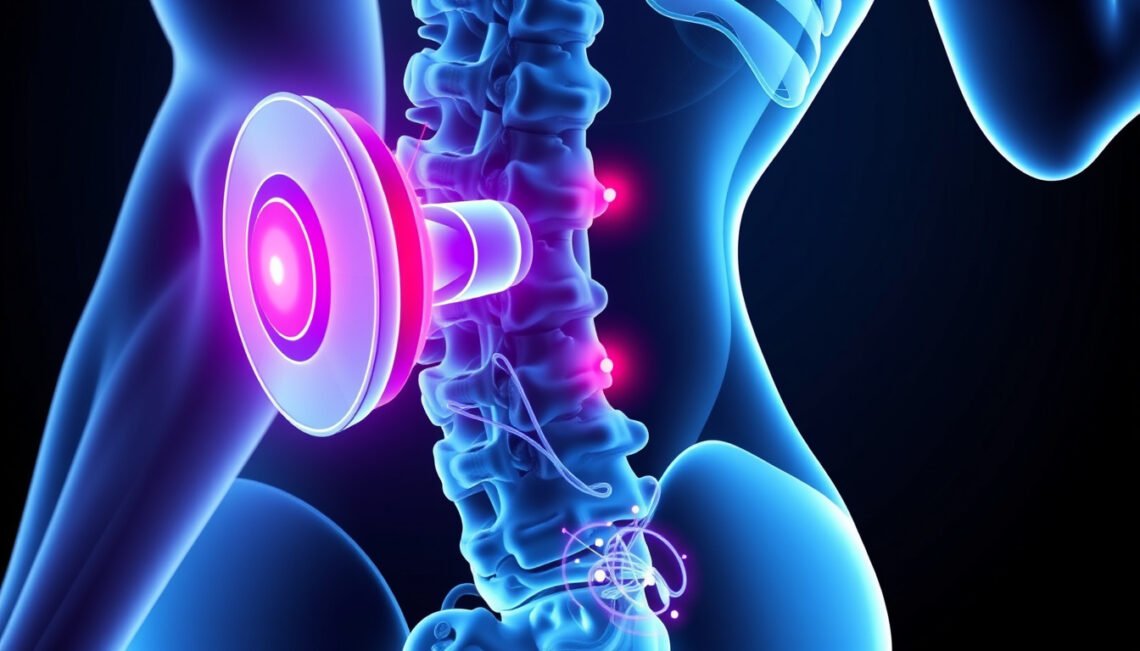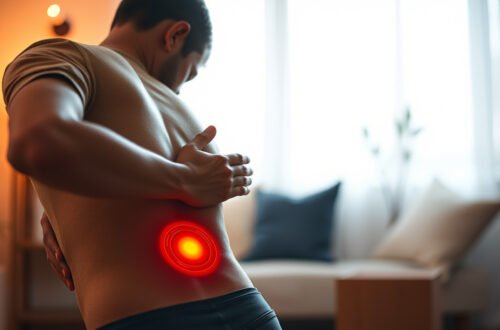A lumbar disc issue can significantly impact your daily life, causing discomfort and limiting movement. Understanding the intricacies of a lumbar disc — its causes, symptoms, and the most effective treatment options — is essential for managing this condition and improving your quality of life. In this comprehensive guide, we’ll explore what a lumbar disc is, why it occurs, how to recognize its signs, and what treatment pathways are available to help you heal and return to normal activities.
What Is a Lumbar Disc?
The lumbar spine is the lower part of your back, comprising five vertebrae labeled L1 through L5. Between these vertebrae are intervertebral discs, which act as shock absorbers, cushioning the bones and enabling flexibility. A lumbar disc refers to the disc located in this lower back region. When these discs undergo degeneration or injury, it can lead to pain, nerve compression, and other neurological symptoms.
The disc itself is made up of a soft, gel-like center called the nucleus pulposus, surrounded by a tough outer ring called the annulus fibrosus. When the outer ring weakens or tears, the inner gel can protrude or herniate, which is a common cause of lumbar disc problems.

Common Causes of Lumbar Disc Problems
The causes of lumbar disc disorders are multifaceted, often stemming from a combination of factors. Here are some of the main contributors:
1. Degenerative Disc Disease
As we age, intervertebral discs naturally lose water content and elasticity, leading to decreased cushioning ability and increased vulnerability to tears and herniation.
2. Trauma and Sudden Injury
A heavy fall, car accident, or sudden twisting movement can cause a disc to herniate or rupture unexpectedly.
3. Repetitive Strain and Poor Posture
Jobs or daily activities involving repetitive lifting, bending, or prolonged sitting can stress the lumbar discs, increasing the risk of damage over time.
4. Genetic Predisposition
Some individuals inherit a predisposition to disc degeneration or herniation, making them more susceptible regardless of lifestyle.
5. Obesity
Excess weight puts extra pressure on the lumbar discs, accelerating degeneration and injury risk.
Recognizing the Symptoms of a Lumbar Disc
Awareness of the signs associated with lumbar disc issues is crucial for early intervention. Symptoms often vary depending on the severity and location of the disc problem but commonly include:
Pain and Discomfort
- Lower back pain that may be sharp, dull, or throbbing
- Pain worsened by movement, coughing, or sneezing
Nerve-Related Symptoms
- Sciatica: sharp pain radiating from the lower back down one or both legs
- Numbness or tingling in the lower limbs
- Muscle weakness in the legs or feet
Other Signs
- Reduced flexibility and movement in the lower back
- Sensory disturbances or reflex changes
Early identification of these symptoms enhances the effectiveness of treatment and reduces the risk of chronic pain or nerve damage.
Effective Treatment Options for Lumbar Disc Issues
When it comes to treating a lumbar disc, the goal is to relieve pain, restore function, and prevent further nerve damage. Treatment options range from conservative therapies to surgical interventions, depending on the severity.
1. Conservative Management
Most lumbar disc issues respond well to non-invasive treatments:
- Physical Therapy: Tailored exercises to strengthen back muscles, improve flexibility, and reduce pressure on the disc.
- Medications: Over-the-counter pain relievers like NSAIDs, or muscle relaxants for severe pain.
- Rest and Activity Modification: Avoiding activities that worsen symptoms while staying active within tolerable limits.
- Hot and Cold Therapy: Applying heat can relax muscles, while cold packs reduce inflammation.
- Epidural Steroid Injections: Corticosteroid injections can decrease inflammation around nerve roots.
2. Lifestyle and Home Remedies
Incorporating proper ergonomics, maintaining a healthy weight, and practicing good posture can help prevent further disc deterioration.
3. Surgical Interventions
When conservative treatments fail after 6-12 weeks, or nerve compression causes significant weakness or loss of function, surgical options may be necessary:
- Discectomy: Removal of herniated disc material pressing on nerves.
- Laminectomy: Removing part of the vertebra to relieve pressure.
- Fusion Surgery: Fusing adjacent vertebrae to stabilize the spine.
It’s essential to consult with a spine specialist to determine the most appropriate surgical approach.
Preventing Lumbar Disc Problems
Prevention remains the best strategy to avoid lumbar disc pain. Consider these practical tips:
- Maintain a healthy weight
- Exercise regularly to strengthen core muscles
- Practice proper lifting techniques (lift with your legs, not your back)
- Use ergonomic furniture and maintain good posture
- Avoid prolonged sitting; take frequent breaks to move around
Top 5 Tips for Managing Lumbar Disc Pain
- Stay active with low-impact exercises like walking or swimming
- Use supportive measures such as ergonomic chairs or lumbar cushions
- Apply heat or cold packs to reduce pain and inflammation
- Follow a physical therapy regimen tailored to your condition
- Seek medical advice early to prevent worsening of symptoms
FAQ About Lumbar Disc
1. What are the common symptoms of a lumbar disc herniation?
Common symptoms include lower back pain radiating down the leg (sciatica), numbness, tingling, muscle weakness, and decreased reflexes in the lower limbs.
2. How is a lumbar disc diagnosis confirmed?
Diagnosis typically involves a physical exam, patient history, and imaging tests such as MRI or CT scans, which provide detailed views of disc health and nerve compression.
3. Can a lumbar disc heal on its own?
In many cases, minor discs herniations or degenerative changes can improve with conservative treatment over time. However, persistent or severe symptoms may require surgical intervention.
External Resources and Further Reading
For authoritative guidance on lumbar disc health and spine care, visit the National Institute of Neurological Disorders and Stroke (NINDS) which provides comprehensive information on spinal conditions.
Take Control of Your Lumbar Disc Health Today!
Living with lumbar disc problems can be challenging, but with the right knowledge and proactive management, you can alleviate pain and restore mobility. If you suspect you have a lumbar disc issue, don’t wait — consult a healthcare professional for a personalized evaluation. Early intervention is key to preventing long-term complications. Take charge of your spine health now and embrace a future of pain-free movement!






